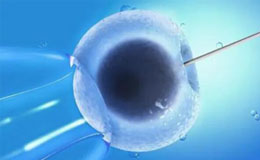NEWS
What is frozen embryo? How long can frozen embryos be preserved?
2021.11.23 1329
What is frozen embryo? Technical principle: freezing embryos is the only mature method to preserve reproductive function. The technology of freezing embryos is to store the embryos obtained by tube culture technology in liquid nitrogen at minus 196 ℃ for a long time. If the treatment fails in this cycle, these embryos can be thawed and transplanted in the subsequent natural cycle. Put the embryo and cryosolution into the freezing tube.
It is a method that the embryo can rest and be preserved in 196 ℃ liquid nitrogen through two cooling methods: slow (embryo on day 2-3) and fast (blastocyst on day 5-6). If there are residual embryos with good quality, they can be frozen and implanted into the uterine cavity after thawing in the natural cycle or artificial cycle, which will increase the chance of pregnancy.
The number of embryos that can be obtained in one superovulation cycle is large and the quality is good, so it can not be transferred all at once. The redundant frozen embryos can be saved, and for patients with severe ovarian hyperstimulation syndrome, if it is not suitable to transfer embryos in the treatment cycle, the frozen embryos can be resuscitated and transferred in the subsequent natural cycle or artificial cycle. The clinical pregnancy rate of frozen embryo resuscitation was 48.28%, and that of blastocyst resuscitation was 63.48%.
Role and effect of frozen embryo technology:
In the course of "test tube baby" for infertile patients, the number of mature eggs is usually increased with the stimulation of ovulation inducing drugs, which can often make the ovaries grow more than ten eggs at a time. But in fact, in each "test tube baby" course, only 1-3 embryos are transferred back to the uterine cavity. Implantation of too many embryos may increase the risk of multiple births, so the remaining embryos can be cryopreserved. If the treatment cycle is not successful, the preserved embryos can be transplanted back to the mother in the later natural ovulation cycle or hormone replacement cycle, and there is no need to carry out superovulation, which can not only avoid the pain of injection, but also save a lot of costs.
In terms of technology, from slow freezing to ice crystallization rapid freezing, both provide good preservation methods. The method of vaccination is fast, but the cost is high, because it is fast and the survival rate and pregnancy rate are quite good.
In freezing embryos, we must choose high-quality embryos, so the embryo scoring standard is also very important. We hope to freeze embryos with developmental potential, which can be provided to patients for future thawing in the future.
Frozen embryos are the most commonly used method of freezing at present, but in some countries, because of beliefs and laws, embryos cannot be frozen, only eggs can be frozen. However, frozen embryos are considered a skilled method, which can be used by many patients.
How long can frozen embryos be preserved?
Frozen embryos can be stored for up to 20 years. As long as they are frozen, the effect is the same no matter how long they are frozen (frozen for 3 months and frozen for 20 years). As long as the embryo survives after resuscitation, it will not have much impact on the embryo quality. Frozen embryos are not the longer they are frozen, the worse their quality will be. Freezing for one day is the same as freezing for ten years, because it is mainly in the process of freezing and resuscitation of embryos that embryos may not tolerate freezing damage. As for the impact of embryo freezing in liquid nitrogen on embryo quality, it has nothing to do with time.





